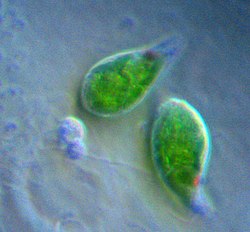| Discicristata Temporal range: | |
|---|---|
 | |
| The heterolobosean protozoa species Acrasis rosea Olive & Stoian | |
| Scientific classification | |
| Domain: | Eukaryota |
| Clade: | Discoba |
| Superphylum: | Discicristata |
| Phyla | |
| Synonyms | |
| |
Discicristata is a proposed eukaryotic clade. It consists of Euglenozoa plus Percolozoa. [1]
It was proposed that Discicristata plus Cercozoa yielded Cabozoa. [2] Another proposal is to group Discicristata with Jakobida into Discoba superphylum. [3]
